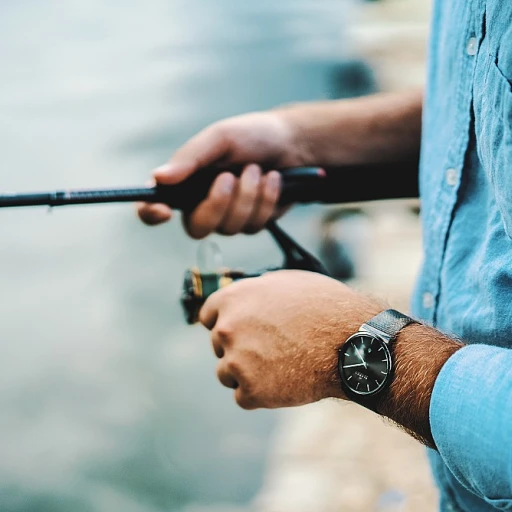
Understanding Fish Finders
Delving into Fish Finder Technology
Fish finders have transformed the landscape of recreational fishing, offering anglers an unprecedented advantage in locating and catching fish. These devices utilize advanced sonar technology to provide real-time data on underwater structures, depths, and fish activity. Understanding how fish finders function can significantly enhance your fishing experience. At the core of a fish finder's functionality is its sonar capability, which sends out sound waves through a transducer. These waves bounce off objects, returning signals that the unit then processes into visual alerts on an LCD display. Fish finders display imaging, including side imaging, to provide a comprehensive view of the underwater environment. When selecting a fish finder, secondary features such as chirp sonar, GPS mapping, and bluetooth connectivity can add substantial value. Well-known brands like Humminbird, Garmin, and Lowrance have incorporated these technologies into their units, such as the Helix Chirp range and Chirp GPS models, expanding what these devices can offer. Price and user-friendly settings, like depth mapping and easy installation, are critical considerations when choosing a device. Competitive pricing often reflects the unit's sophistication, but understanding your fishing needs will guide you to the best fish finder that offers optimal performance. For those embracing technology on their fishing boat, fish finders are more than just a purchase—they are an investment into a more successful and enjoyable fishing expedition. They deliver depth analysis, scanning sonar capabilities, and even ice fishing options, making them indispensable tools for any avid fisherman aiming to make the most out of their time on the water. Learn more about enhancing your fishing experience through appropriate gear and technology by exploring our insights on the right gloves.Choosing the Right Fish Finder for Your Needs
Evaluating Various Models and Their Features
Choosing a fish finder that meets your specific fishing needs is pivotal in augmenting your angling adventures. With an array of models available, understanding what each offers can guide you to make an informed decision.Considerations for Selecting a Fish Finder
When comparing fish finders, take into account the following factors to ensure you select the best one for your needs:- Type and Environment: For easy real-time monitoring, determine if you need a unit for a boat or a portable option for ice fishing. Depth and water conditions also matter.
- Frequency and Depth: Different models like the Lowrance Hook series and the Humminbird Helix Chirp offer frequency variations. High-frequency sonar is great for detailed imaging, whereas low-frequency is better for deeper waters.
- Imaging and Display: Models like the Garmin Striker with its vivid LCD display and side imaging capabilities provide detailed views of underwater structures, aiding in a more comprehensive fishing excursion.
- Navigation and Mapping: For those who venture into new waters, a GPS fish finder such as the Chirp GPS not only helps in finding fish but also assists in mapping out paths, ensuring you have a reliable route back.
- Budget and Price: Each unit comes at a different price point, so it's important to align your choice with your budget. Even the best fish finders, like the Helix series, come at competitive prices.
Technical Specifications
Dive into technical aspects like the sonar transducer capability and chirp sonar technology. High-quality sonar transducers can differentiate between fish and other objects in water. For an enhanced experience, look for units that offer Bluetooth functionalities, providing easy integration with other devices. For further insight into staying protected while enjoying your fishing experience, explore the importance of UV protection clothing for anglers to keep you safe under the sun while you scout the waters with your new fish finder.Installation Tips for Optimal Performance
Get it Right: Tips for Setting Up Your Fish Finder
Proper installation of your fish finder is crucial to ensure optimal performance and accurate readings. Whether you've invested in a Humminbird Helix, Lowrance unit, or a Garmin model, following these tips will help you get the most out of your fishing trips.- Select the Right Spot for the Transducer
- Correct Angling for Accurate Reads
- Secure Mounting Brackets
- Appropriate Power Source
- Cable Management
Maximizing the Use of Your Fish Finder
Make the Most of Your Fish Finder: Essential Tips
To truly capitalize on the potential of your fish finder, it's crucial to familiarize yourself with its features and capabilities. Most modern units, such as the Humminbird HELIX series, Garmin depth finders, or Lowrance scanners, offer advanced options like GPS, CHIRP sonar, and side imaging. Understanding how to utilize these features will help enhance your fishing experience.
- Explore CHIRP Sonar: By emitting a continuous sweep of frequencies, CHIRP sonar can provide high-resolution images of what's below the water's surface. This allows you to identify fish with great accuracy. Experiment with different frequency settings to find the best configuration for your specific fishing environment.
- GPS and Mapping: The integrated GPS function offers more than just location tracking. Use the unit's mapping features to chart underwater structures, create waypoints, and save favorite fishing spots. This is especially useful when fishing on ice or exploring new waters.
- Side Imaging Capabilities: Devices with mega side imaging give you a unique perspective by showing imagery from the sides of your boat. This can help pinpoint fish hiding around structures. Regularly adjust settings to ensure you're viewing images at the correct depth and clarity.
- Transducer Installation: Check that your sonar transducer is correctly mounted to avoid inaccurate readings. Improper installation can lead to signal interference, hindering the effectiveness of your finder.
- Real-Time Scanning: Keep an eye on the real-time scanning functionality, an invaluable feature for tracking moving fish or understanding immediate changes in the underwater environment.
- User-Friendly LCD Display: Familiarize yourself with the LCD display and customize it according to your preferences. Adjusting brightness, contrast, and colors can make the device easier to use in varying light conditions.
Ensuring you have a user-friendly interface and maximize the use of features will make your fishing trips far more fruitful. With modern units offering expansive feature sets, like linked finance via Bluetooth fish functionalities, there's much to explore. Take this opportunity to delve into each feature, setting your fish finder to the top of its game.
Troubleshooting Common Fish Finder Issues
Quick Solutions for Effective Fish Finder Troubleshooting
To ensure you maximize your fishing outings, efficient troubleshooting of your fish finder is essential. These user-friendly steps will guide you through resolving common challenges, ensuring your device offers top performance every time you head out on the water.- Assessing Power Issues: Before diving deeper into other potential problems, verify that your fish finder unit is receiving adequate power supply. Check battery connections and test voltage levels to ensure the battery isn’t depleted or faulty.
- Confirming Proper Connections: Loose or corroded connections can disrupt data transmission from sonar to the display. Inspect the cables connecting your sonar transducer to the fish finder display, ensuring they are securely connected and free of corrosion.
- Sensitivity and Depth Settings: Incorrect sensitivity or depth settings can result in poor imaging outcomes. Adjust these parameters to suit the water conditions, particularly if you're using advanced features like mega side imaging or spectrum chirp.
- Calibration and Mapping Accuracy: If your GPS mapping or chirp sonar appears inaccurate, recalibrate the device. Ensure your unit's software is updated for optimal mapping accuracy and real-time depth measurements.
- Handling Sonar Interference: Recognize signs of sonar interference, such as cluttered images or false fish readings, and address them by altering your sonar frequencies or repositioning the transducer.
Future Trends in Fish Finder Technology
Emerging Trends in Fish Finder Technology
In the ever-evolving landscape of fishing technology, fish finders have seen remarkable advancements that promise to elevate the fishing experience. As you delve into upgrading or adopting new units, understanding where the technology is headed can help you make informed decisions to enhance your fishing adventures. The push towards real-time imaging capabilities is gaining momentum, allowing anglers to view live-action underwater environments. This is particularly beneficial for targeting specific species and tailoring your fishing strategies more effectively. Manufacturers like Humminbird and Garmin are at the forefront of integrating advanced real-time scanning sonar, offering unparalleled clarity and precision. Another significant advancement lies in the integration of GPS technology with fish finders to provide more accurate mapping and location services. Units such as the Garmin with chirp GPS functionality allow for more precise navigation and tracking of productive fishing spots.Next-generation fish finders are becoming more user-friendly, with intuitive interfaces and smart connectivity features. Bluetooth fish finders are increasingly popular, enabling connection to smartphones and tablets for seamless data sharing and device control. This level of connectivity promotes easy updates and customization, ensuring your unit remains at peak performance. Moreover, the trend towards high-definition imaging with technologies like mega side imaging ensures that the underwater landscape is rendered in incredible detail. This is paired with enhanced chirp sonar and spectrum chirp technology, which improves target separation and depth accuracy. Models like the Humminbird Helix series are exemplars of these capabilities, offering anglers high-definition, multi-dimensional views. Finally, ice fishing enthusiasts are not left out, as depth finders and depth imaging technology evolve to meet the unique challenges of fishing through thick ice. With advancements in sonar transducer designs, finding the best fish beneath several layers of ice becomes more efficient. With these exciting developments paving the way, the future of fish finders promises more engaging and successful fishing excursions. Even as these technologies advance, it's essential to remain informed and adapt your setup to fully benefit from the improvements in depth finders and sonar units.



-large-teaser.webp)









